In data from 2019 and 2021, 86% of non-Federal general acute care hospitals had adopted a 2015 Edition certified electronic health record (EHR). In contrast, only 40% of rehabilitation hospitals and 23% of specialty hospitals had adopted a 2015 Edition…
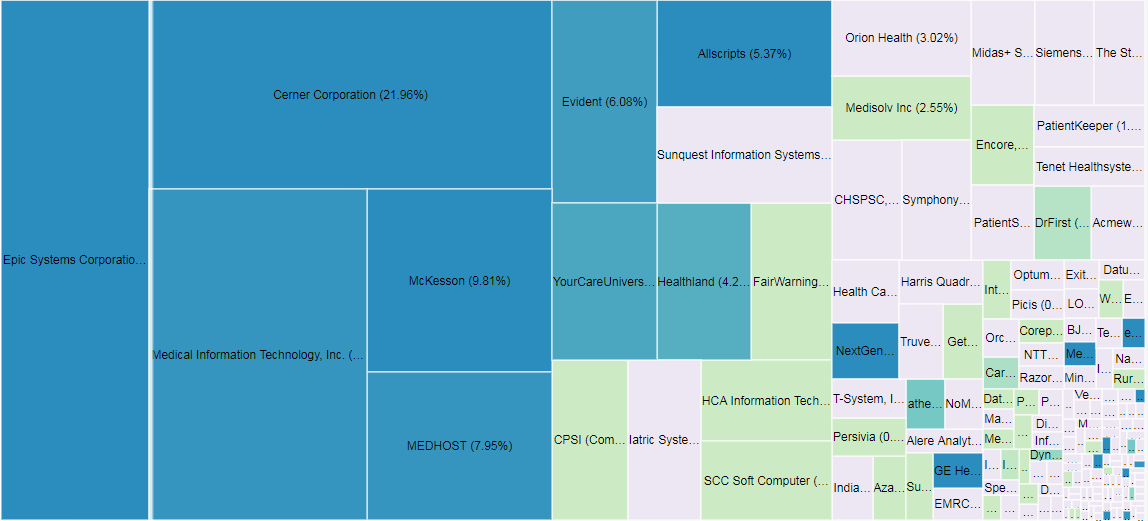
These graphics visualize the proportion of developers, by market share, that have certified 2015 edition health IT modules. Market share approximations are determined through an analysis of the certified health IT products reported by participants in the…
As of 2021, nearly 9 in 10 (88%) of U.S. office-based physicians adopted any electronic health record (EHR)[2], and nearly 4 in 5 (78%) had adopted a certified EHR[4]. This is a consistent trend since 2015. Since 2008, office-based physician adoption of…

In 2017, of all non-federal acute care hospitals possessed certified health IT. Small rural and critical access hospitals had the lowest rates at 93 percent. Ninety-nine percent of large hospitals (more than 300 beds) had certified health IT, while 97…
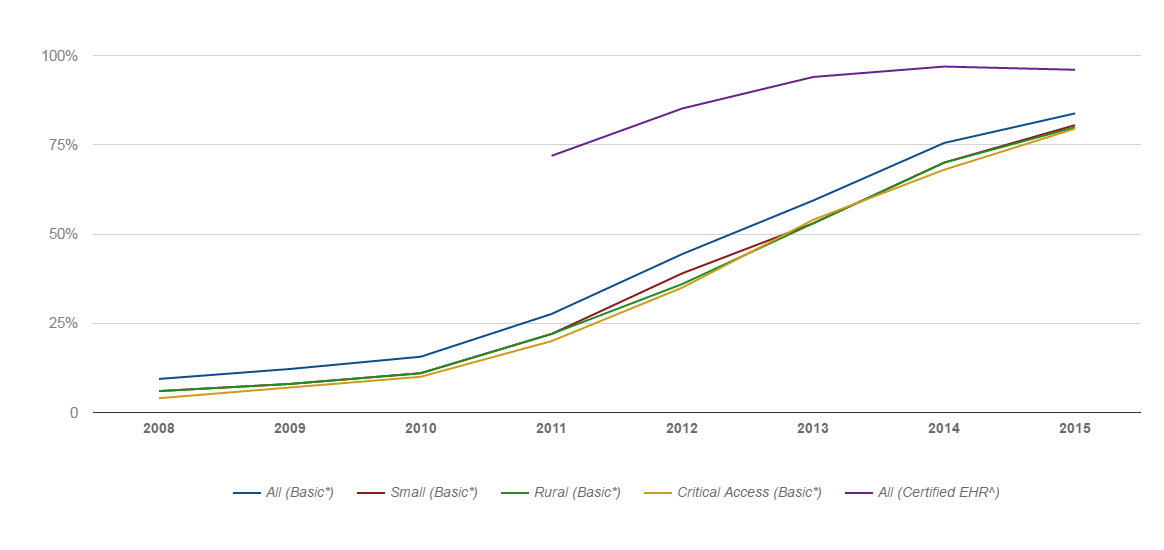
In 2015 over 4 in 5 of all non-federal acute care hospitals had adopted a Basic EHR with clinician notes. 96% of non-federal acute care hospitals have possession of an EHR certified by HHS. This percentage has held through 2017.
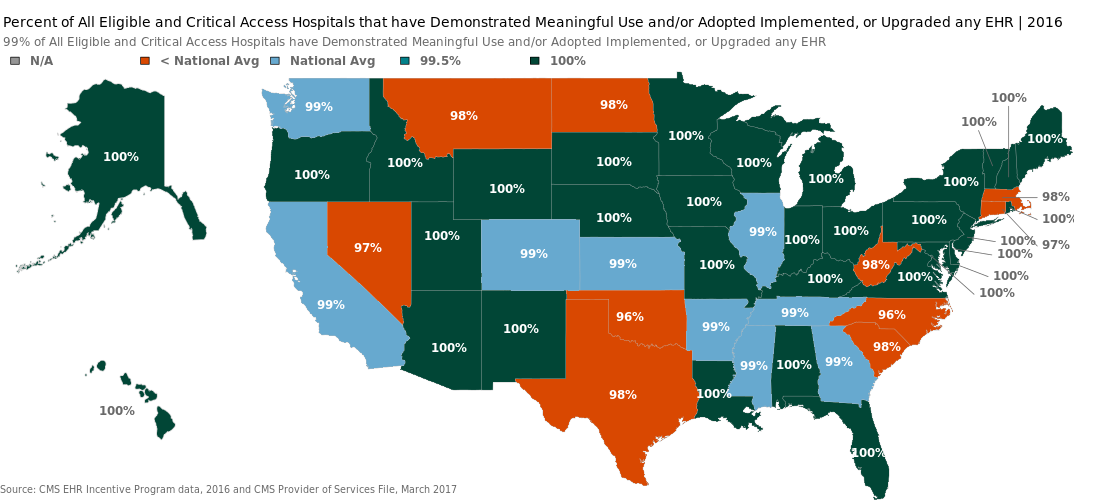
As of 2016, over 95 percent of all eligible and Critical Access hospitals have demonstrated meaningful use of certified health IT through participation in the Centers for Medicare & Medicaid Services (CMS) Electronic Health Record (EHR) Incentive…
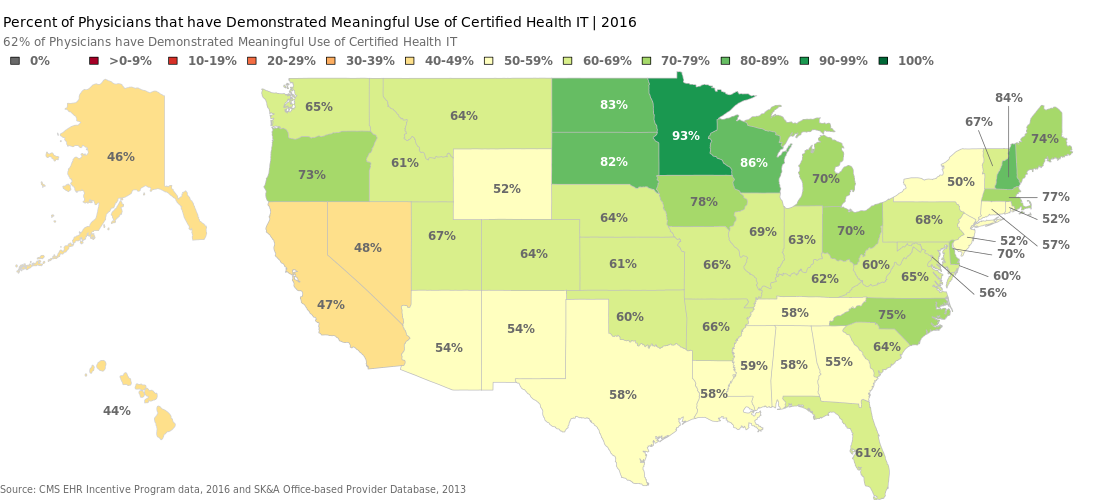
As of the end of 2016, over 60 percent of all U.S. office-based physicians (MD/DO) have demonstrated meaningful use of certified health IT in the Centers for Medicare and Medicaid Services (CMS) Electronic Health Record (EHR) Incentive Programs. Over…
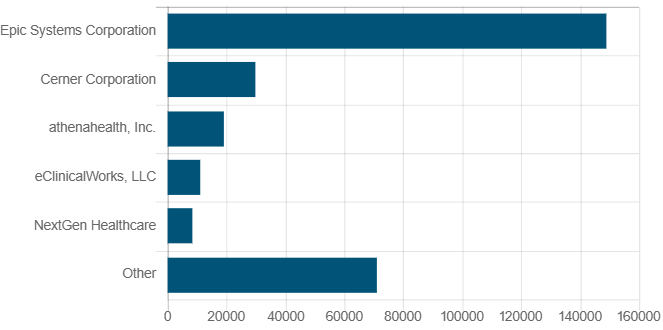
240,207 eligible clinicians participated in the CMS Quality Payment Program and reported for Promoting Interoperability in 2023. Analysis of the public dataset, Certified Health Information Technology Reported by Clinicians for Promoting Interoperability…
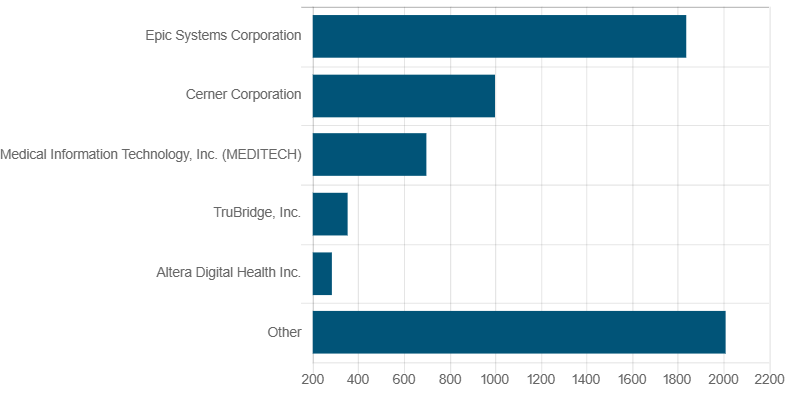
4,046 non-federal acute care hospitals reported in 2023 of the Medicare Promoting Interoperability Program. Analysis of the public dataset, Certified Health Information Technology Reported by Hospitals for Promoting Interoperability Performance (https://…
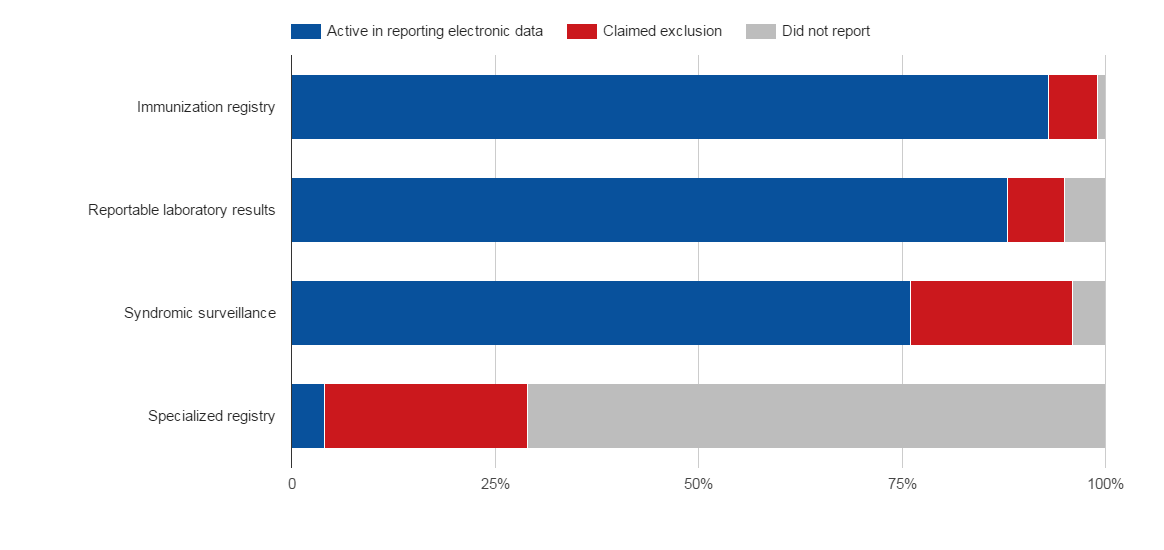
In 2015, 4,043 eligible and Critical Access hospitals (EH) reported to the Medicare EHR Incentive Program. 90 percent of hospitals attested to stage 2 of meaningful use. 93 percent of all hospitals reported active engagement with an immunization registry…
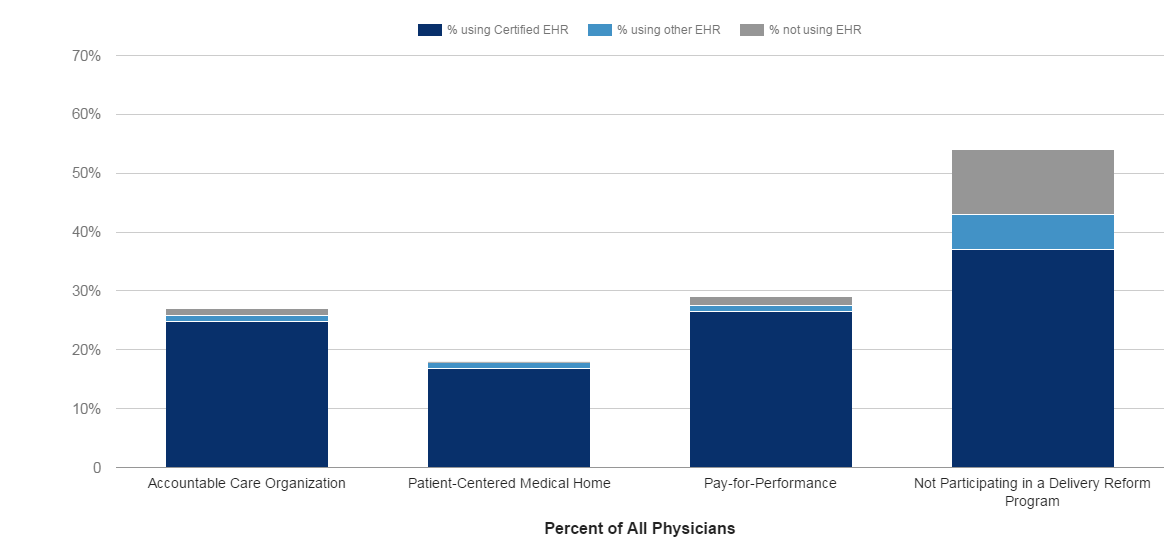
In 2015, <br/> reported use of a certified EHR, and 46% of all physicians reported participating in a delivery system reform program. Of those physicians participating in a delivery reform program in 2015, 90% reported using a certified EHR. Of all…
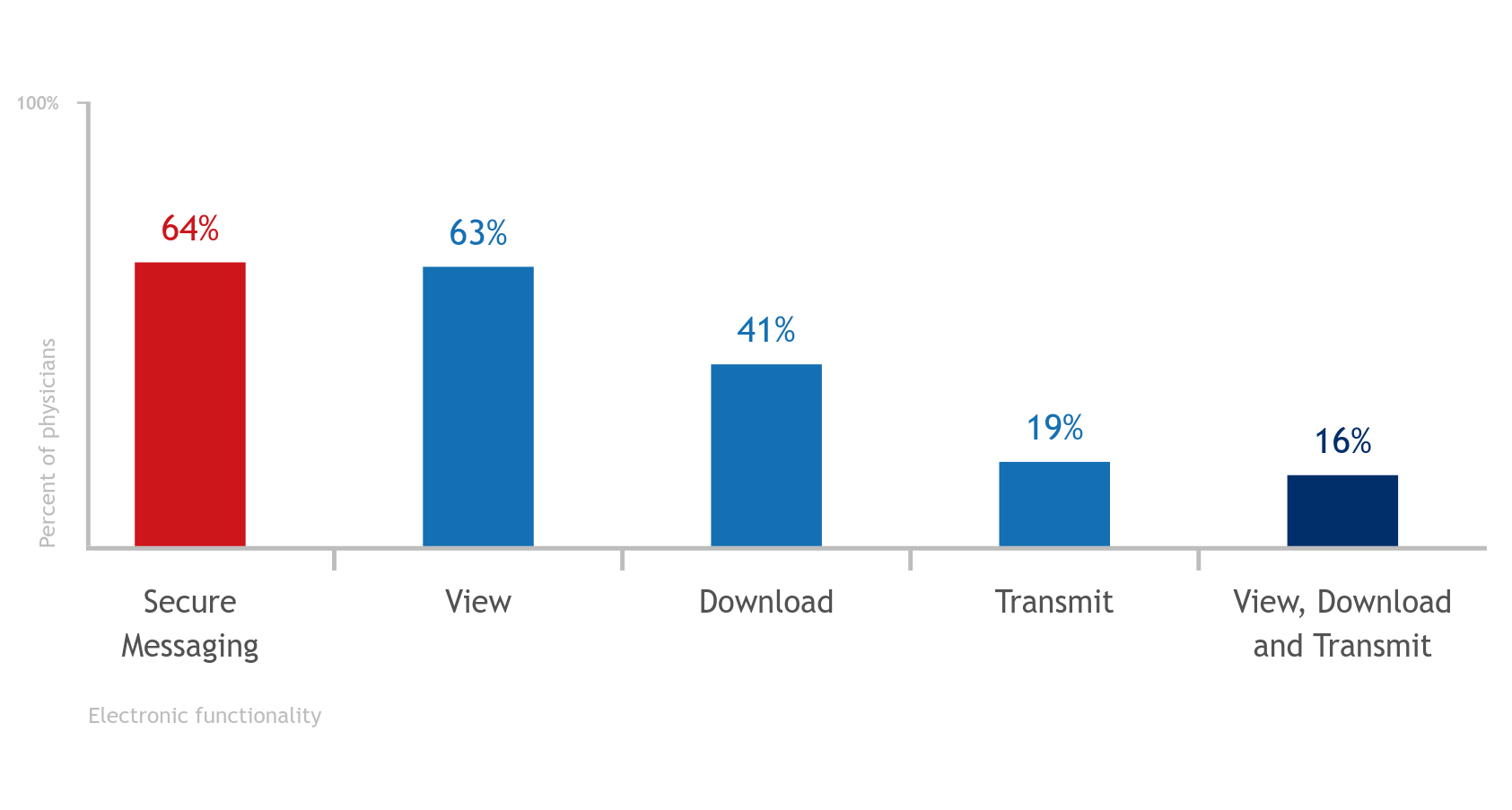
In 2015, 64% of physicians had an electronic health record (EHR) with the capability to exchange secure messages with patients, <br/>. Furthermore, 63% of physicians had the capability for their patients to electronically view their medical record…
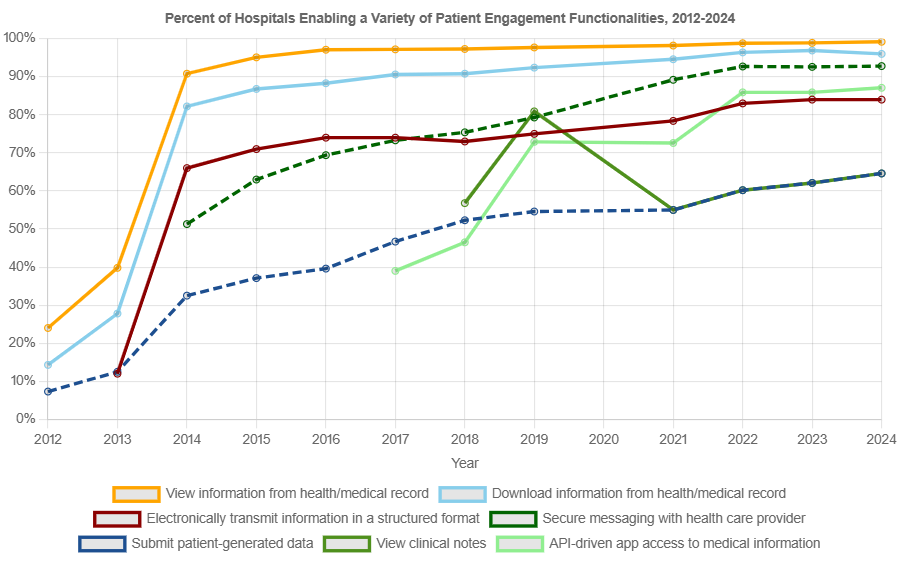
From 2012 to 2024, U.S. non-federal acute care hospitals reported a gradual increase in patients’ ability to access their health information and engage with hospital providers. By 2024, nearly all hospitals enabled patients to view and download their…
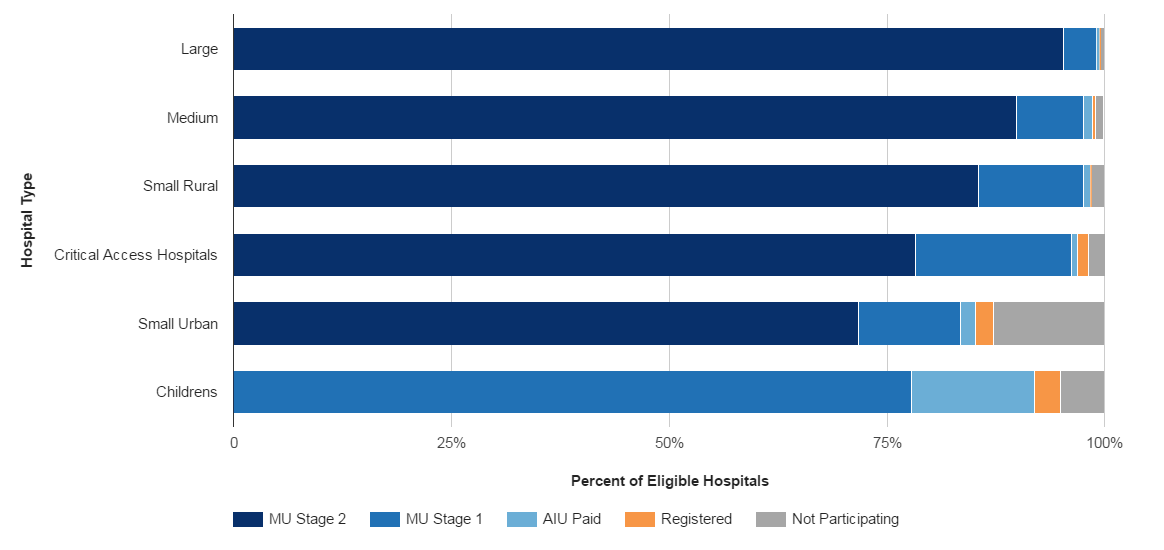
This figure was published in the March, 2013 ONC Data Brief, <br/>.
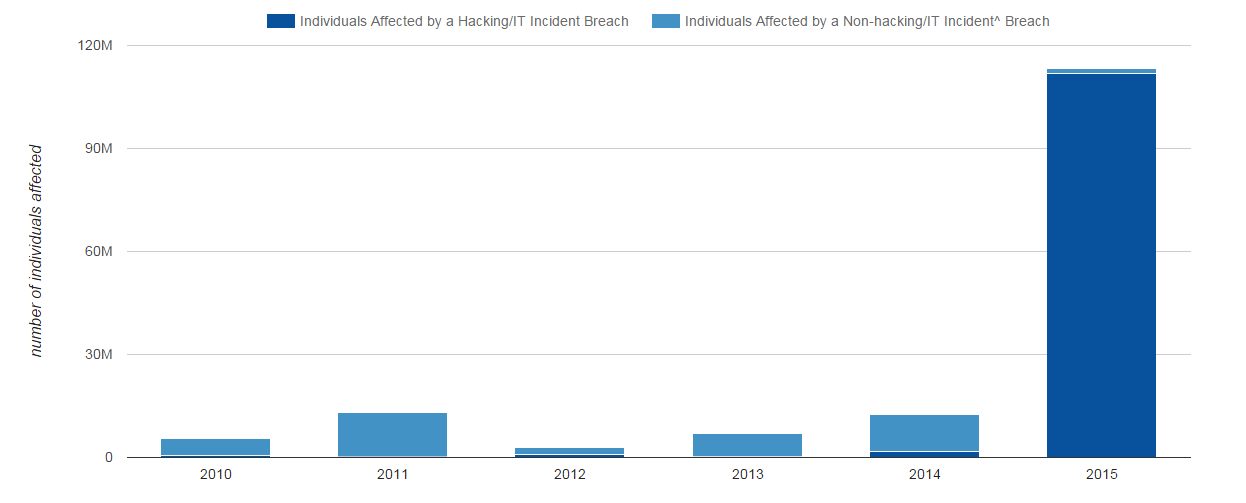
Based upon data collected by the HHS Office for Civil Rights, as of February 1, 2016, protected health information breaches affected over 113 million individuals in 2015. In 2015, hacking incidents comprised nearly 99% of all individuals affected by…
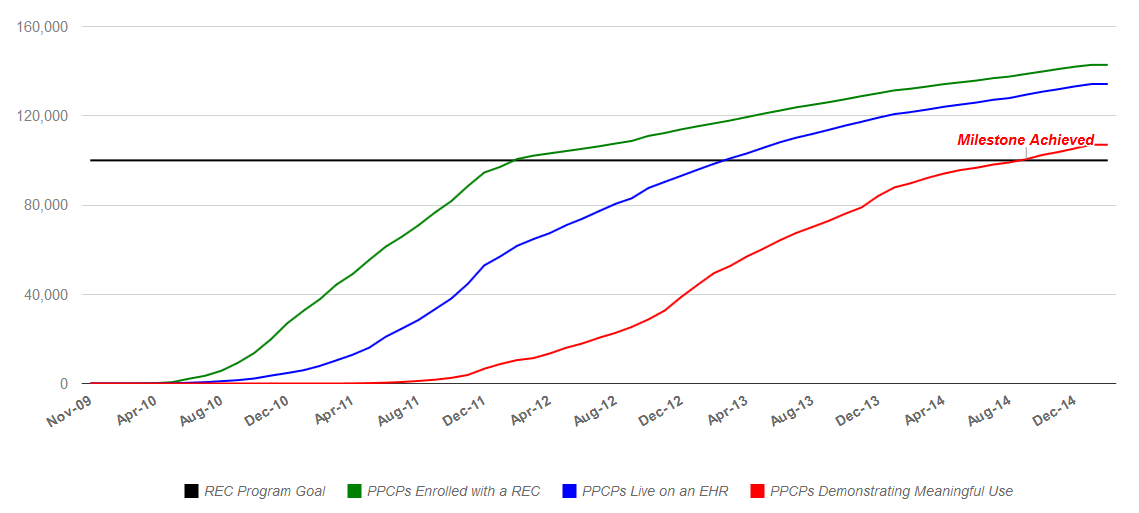
As of January 2016, the REC program has exceeded its target to enroll and assist 100,000 priority primary care providers (PPCPs) to demonstrate meaningful use (MU) of certified EHR technology (CEHRT). RECs support providers' adoption of CEHRT and…
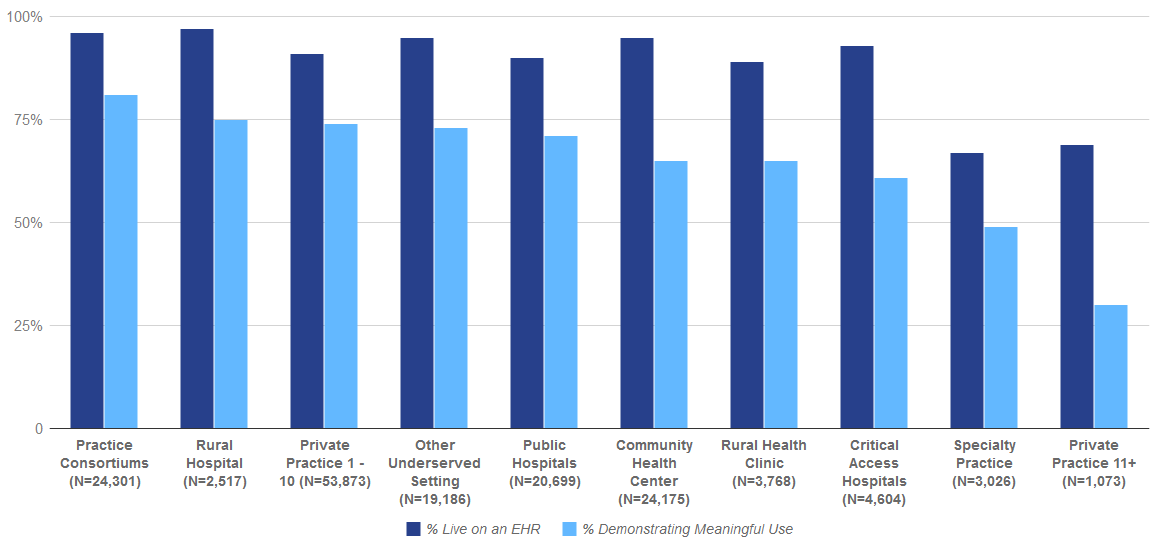
Over 90 percent of Regional Extension Center (REC) enrolled providers are live on an EHR, with three-quarters of enrolled providers demonstrating meaningful use (MU) of certified EHR technology (CEHRT).
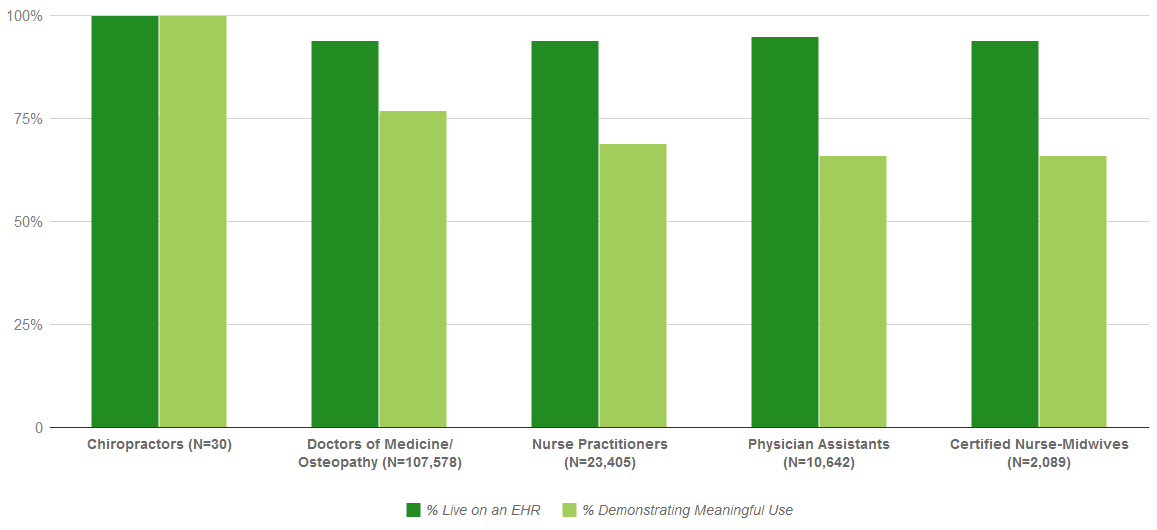
Over 90 percent of all REC enrolled primary care providers are live on an EHR, with three-quarters demonstrating meaningful use (MU) of certified EHR technology (CEHRT). The majority of REC enrolled primary care providers are medical doctors or doctors…

